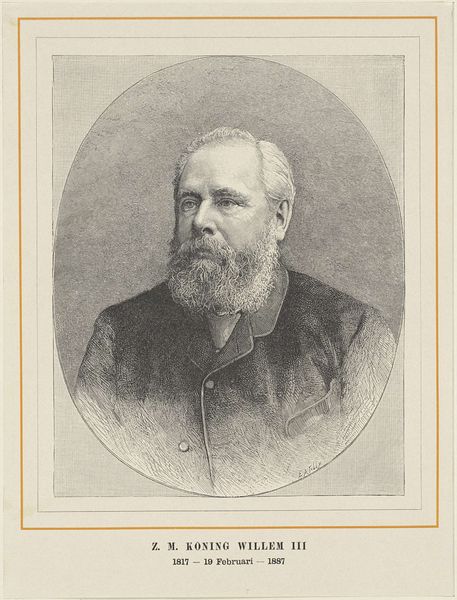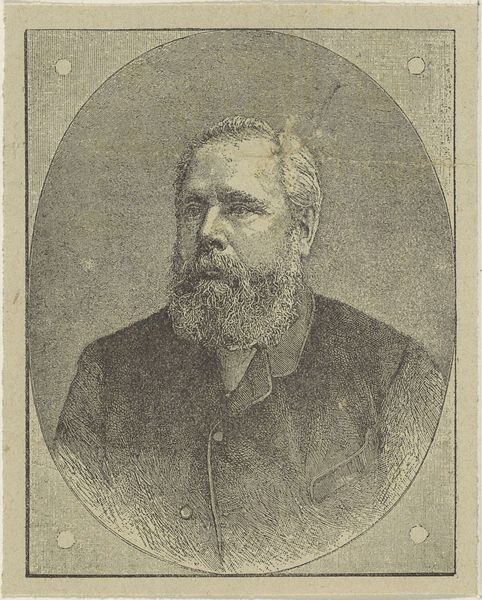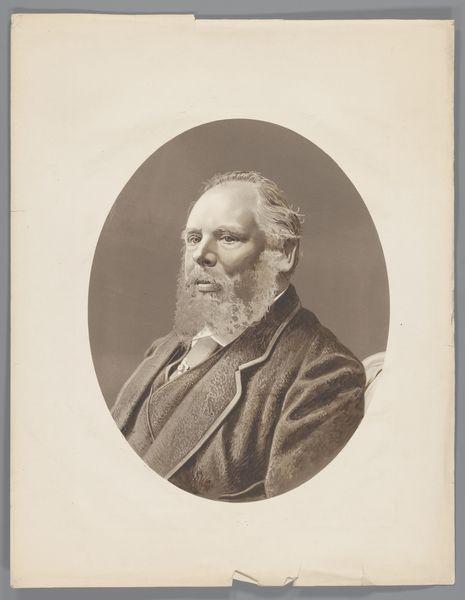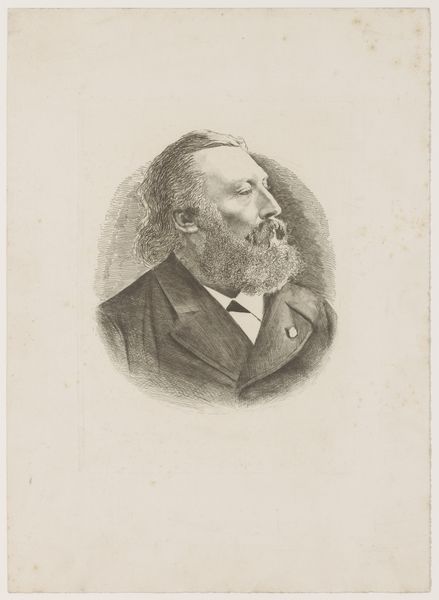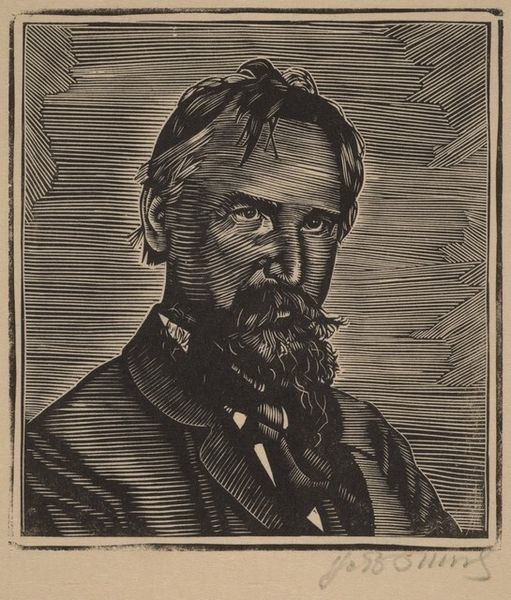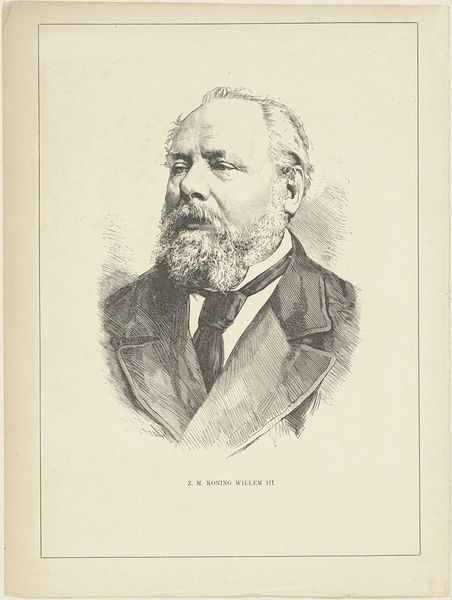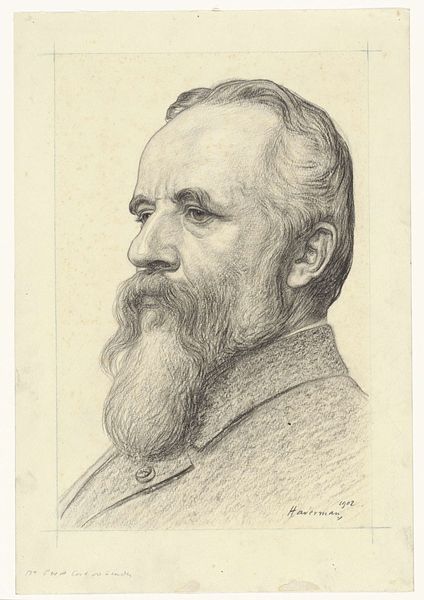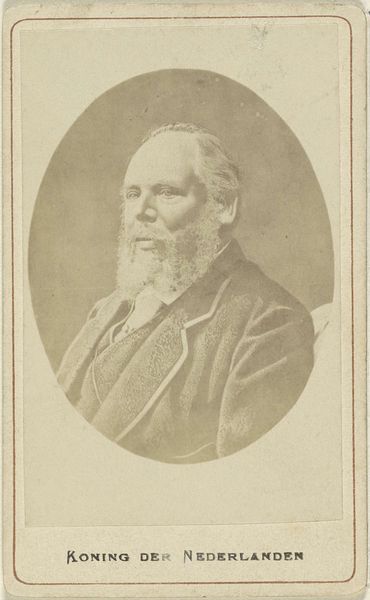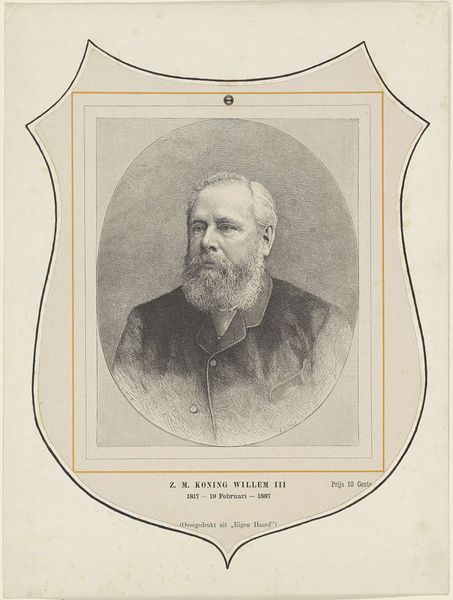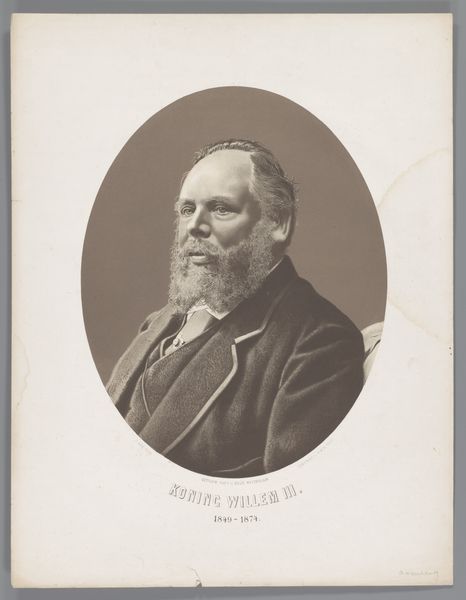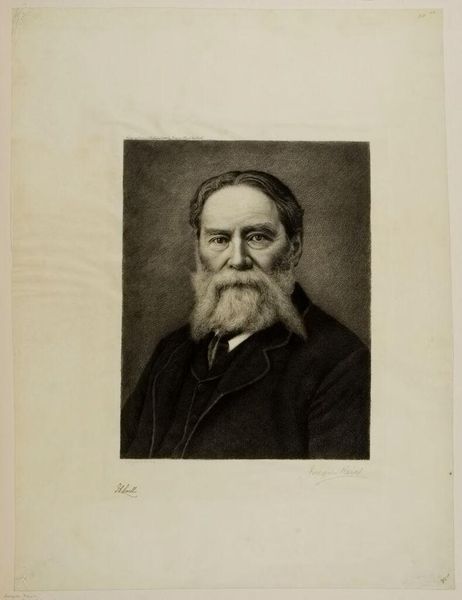
print, photography
#
portrait
#
16_19th-century
# print
#
photography
#
19th century
Dimensions: height 136 mm, width 100 mm
Copyright: Rijks Museum: Open Domain
Editor: This print, titled "Portrait of Willem III, King of the Netherlands," is from the 19th century, created using photography as a medium. The subject exudes a sense of stern authority. What kind of statement do you think this photograph makes about royalty at the time? Curator: Considering the 19th-century context, portraiture served significant social and political functions. Royalty deployed portraits as tools to disseminate an ideal image of power and stability. Given Willem III’s position amidst evolving political landscapes, how do you think a photographic print, as opposed to a painting, impacted its reception? Editor: Well, photography offered a seemingly objective depiction, perhaps lending the portrayed authority an aura of authenticity in an age increasingly focused on realism and scientific advancements. But it could also make it seem…less grand? Curator: Precisely! This tension is crucial. The choice of photography democratized the image of the monarch, making him accessible. Simultaneously, by carefully controlling the pose, attire, and distribution, the monarchy attempts to manage how its power is perceived and internalized by the populace. Note also the photographer, "Delavieter and Co., The Hague"; how does their place within Dutch society affect this work's message? Editor: That makes perfect sense! Perhaps they were aiming to capture an image that both legitimized the royal figure, and brought them into the modern era. Curator: Exactly. Understanding art within historical structures allows us to read it not merely as an image, but as an artifact deeply embedded in its social moment. Editor: I definitely have a clearer sense of the layers involved. Thanks for shining a light on the context surrounding this regal portrait!
Comments
No comments
Be the first to comment and join the conversation on the ultimate creative platform.
